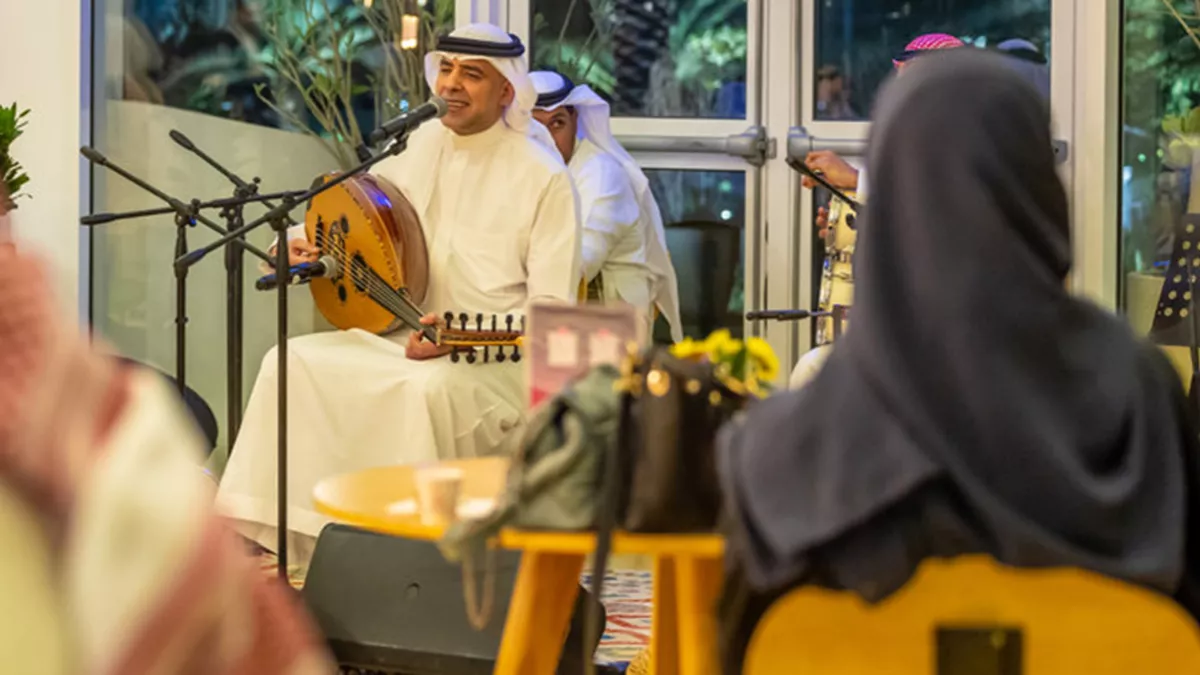Audiovisual exhibition FenaaPhone provides a microcosm that encapsulates the nostalgic music of the Kingdoms heritage
25 Sep 2023
News
Through the magnificent, one-of-a-kind archive collection of Saudi artist Saad Al-Howede, the spiral staircases of the Diplomatic Quarter's newest art and creative centre, Fenaa Alawwal, are transporting audiences back to the beginnings of Saudi music through Oct. 12. The audiovisual installation "FenaaPhone" offers a microcosm that encompasses the nostalgic music of the Kingdom's legacy as viewers are immersed in the works of luminaries like Tarek Abdulhakim, who wrote the tune of the Saudi national song, and the renowned "Queen of Saudi Pop" Etab.
The event is one of the first to both promote conversation about the relevance of the Saudi pop music scene today and highlight the rise of the Saudi pop music scene via a carefully crafted discourse from the late 1950s to the 2000s. The main goal of "FenaaPhone," which was curated by Sawtasura, a research project devoted to recording the history of Saudi women through voice legacy, is to give younger generations a foundation for understanding the rapidly expanding sector.
The collection of things is spread over five immersive areas of the exhibition's scenography, which was created by Studio Bound. The tour starts at "Folk to Formal," where viewers may learn more about the local music scene prior to the 1960s. Native American poetry and songwriting served as the foundation for music, which was frequently used as entertainment or solace at special occasions like funerals and weddings. The oud, a string instrument, was often utilised by artists of the era, notably Fahad bin S'ayyed, Mukhled Atheyabi, and Abdullah Al-Salloum.
A rare magnetic wire recording of the 1950s song "On the Road for Prayer" by Isaa Al-Ahsa'l is also included in this part. The "Turning from Within" portion moves forward from the middle of the 1960s to the late 1970s, a time when record shops started to appear with the growth of urban life. This time period also saw an expansion in the creation of independent recording studios run by artists and Saudi-owned record labels, as well as women's access to these settings as key players in the sector.
The "Make It Pop!" section contains a decade's worth of Saudi pop tales that were featured in print Arab newspapers and covered the years 1982 to 1992. Many of the works point to Etab, who is the first Saudi female vocalist to become public and gain regional celebrity status. She was an influence to other artists at the time and still is now since her work cut across geographic barriers.
The exhibit offers visitors the ability to immerse themselves in history, take in real live performances, and compare historical works with contemporary viewpoints. There is a lot of music from Saudi Arabia on YouTube and other websites, however none of them are currently mediated. Along with a number of panel discussions, musical performances, and a pop-up shop, the "FenaaPhone" exhibition is being held.
